QuestionQUESTION: Hi there!
I have a leopard gecko. He's been having difficulty shedding & hasn't eaten for about a week. Took him to the vet today - they gave him some antibiotics (for a small skin infection) and said to force feed him for a few days until he gets his strength back up. I tried to give him 2 crickets today, one he just regurgitated right away, the other I couldn't even get in his mouth. A third try resulted in him biting me. Do you have any tips on getting him to eat?
(I've also seen some other posts on the www about some sort of 'slurry' that is a liquid type diet for the leos, but can't seem to find a recipe. Any thoughts?)
Thanks!!
ANSWER: Hi Kelli,
This is the slurry you are referring to I think...
http://repticzone.com/forums/Geckos-Leopard/messages/1758235.html
What concerns me is that your leo regurgitated. That may be that the antibiotics aren't agreeing with him or since his stomach is empty when given the antibiotics. When on antibiotics it depletes their needed gut bacteria. The same way Drs recommend humans eat yogurt when on antibiotics because of the antibiotics killing off even the good bacteria.
The slurry above does include the needed "gut boosters" that add needed bacteria to their system to help with digestion.
With the slurry, if you just touch it to his mouth, its natural for them to lick so hopefully that gets some into him.
Also, for the stuck shed, are you using a humid hide on the warm side of his tank? If not, its important to get one made for him. I am including a basic care sheet that I wrote to help people out. If the vet didn't suggest using an antibiotic ointment on the sore areas, I would use some Neosporin. Also, if you have sand in the tank, its best to remove it. Sand is deadly to leos.
Double check your temperatures to make sure he is warm enough in his warm end of his tank.
Keeping him hydrated is very important. Offer water on his lips...using an eye dropper. If he is holding weight in his tail, thats a good sign.
You may want to try and entice him with some wax worms..the candy of the leo world!! Just don't let him make it a habit of eating wax worms as too many on a regular basis can cause overweight and fatty liver disease.
You might want to break the hind legs on the crickets so they can't jump. He may need to have slow moving insects when he does start eating again or he may even try to eat the crickets that are not jumping.
BASIC CARE FOR A LEOPARD GECKO
Leopards are pretty easy to care for but they do need
special care. Here are some of the basic needs of your gecko.
HOUSING: The need to have at least a 20 gallon long tank for one Leo. This needs to have a secure fitting screen top...they can be quite the escape artists!!! They need to have a humid hide box.You can make this with something as simple as a small plastic dish with a hole cut in one side and a small mesh bag filled with some Sphagnum moss coconut bark or Peat moss that you mist.
I made mine out of the small plastic folgers coffee containers...I cut an opening in the lid..and put the moss in..they LOVE it. I use the terrarium moss in mine.
I use that on the warm side of the tank. Be sure to provide a cool hidebox on the other end. I also provide a mid temperature hide...which is in the middle of the tank.I use the critter caves which you can purchase. NOT the ones that have heat in them!!!!
Provide secure climbing areas for your gecko. Fake plants, rocks and branches are all fine to use. be sure there are no wires or sharp ends to any fake plants you use.
*****SUBSTRATE:(that's the stuff on the floor of your tank) Newspaper, lizard carpet or paper towels work great and are easy to clean and are much safer than any loose substrate. Sand or other loose substrate is not recommended as that they can be deadly to the leo when it is ingested(eaten, even by accident while eating their insects)...A very graphic site of an impacted leo surg can be seen at http://homepage.mac.com/exoticdvm/reptile/PhotoAlbum181.html it is very graphic!!! ******What I have found that works great for safety and heat distribution is using about 1/4 inch of childrens play sand(since the tiles fit tight together, there is no sand danger) on the bottom of the tank and on top that you place ceramic or slate floor tile. What is nice is that the 12 x 12 squares fit perfect in a 20 gallon tank with no spaces between the tiles. The sand and the tile distribute the heat wonderfully. Using the under tank heater as described is what distributes the heat. Also, overhead heat will help in heating the tiles...I've been using this set up for several years and the leos love it. Using a tile that isn't smooth is recommended. **********
TEMPERATURES: They need a warm area ( on the floor) of 88-92 degrees and a
cooler area in the upper 70s, low 80s. At night their temperature can drop to the low to mid 70's.
Never use a hot rock for a leopard gecko...or any reptile.
They can severely burn any reptile. You can use a heating
pad under the tank,under tank heater for the warm area. You can use a regular household lightbulb in a dome fixture with a ceramic socket in it to keep the warm area at the 88-92 degree area if needed there, otherwise, placing the lightbulb about midway in the tank will give the needed temeratures throughout the tank. You may have to play with the wattage of the bulb but generally 40-60 watts is sufficient.At night, no white light. If room temperatures stay above 70 degrees, no extra night heat is needed. The undertank heater or heating pad should cover about 1/3 of the tank....be sure to raise the tank up about 1/4-1/2 inch off the stand when using an undertank heat source to prevent heat build up which can cause the glass to break and hot spots in the glass. Be sure to have a good layer of newspaper, carpeting or, even a thin flat rock(such as tile) on top the area that the undertank heat source is placed...if you use a thin rock or tile, it helps to distribute the heat very well.
You can use the special nighttime lights that are designed for reptiles. I like using a ceramic heat emitter on a thermostat for nighttime heat.
DO NOT use black lights or party lights as they can cause eye damage!!!!
The wattage you use will vary based on room temperature and size of tank.
LIGHTING: Leopard geckos do not need UVB lighting but it does not hurt them to give them uvb. They should have some type of light during the day, be it a uvb tube, regular florescent light, reptile day light or regular household lightbulb. NO white lights at night!!!
FEEDING: Geckos should not be fed crickets or other insects that are bigger than the space between their eyes. Generally, hatchlings can be fed more than once a day,juvys can be fed twice a day, adults are fed once daily or every other day, in the early evening. Crickets and other food items such as silk worms, super, and an occasional treat of a wax worm, need to be dusted with a calcium supplement two times a week and also they should have a small dish of calcium in their tank. I use the lid of a milk jug for the little dish of calcium in their tank. For dusting the insects, Use a calcium with no added phosphorus. Insects must be gut loaded(fed) for at least 48 hours prior to feeding your gecko. Remove any uneaten crix or superworms after 15-20 minutes..... Place a piece of cut potato in the tank so that if you have missed any uneaten insects, they will eat the potato instead of nibbling on your gecko!!!
*************You have to be sure to feed your crickets and insects the right foods before feeding them to your gecko. If your crickets/insects are not healthy and well fed, your gecko will not get the nutrition he needs. You can gut load your crickets and insects greens, veggies, cereals or specially designed commercial foods for crickets or the insects you are feeding. ************
Be sure to have a small dish of clean water for your gecko at all times!!
You can offer them some baby food or fruits on occasion ...
Mine will even eat a small piece of watermelon now and then.WATER: always provide a dish of drinking water. If you choose to mist your gecko to drink, its best to not get the tank too wet as that they do not do well with higher humidity. Sometimes its better to take your leo out of their tank to mist them to get them to drink!!!
HANDLING: Some geckos enjoy being held...others prefer not to be handled at all. Be sure to be very gentle when holding your leo and NEVER grab them by the tail! Their tails are extremely fragile and will break.
I do suggest finding a vet that can treat reptiles BEFORE you actually need one!!! To find a vet that is able to care for reptiles:
http://www.herpvetconnection.com
http://www.arav.org/ECOMARAV/timssnet/amm/tnt_mdsearch.cfm
http://www.anapsid.org/vets/
For more information on leopard geckos:
http://www.drgecko.com
If you have any questions or don't understand something, please let me know.
---------- FOLLOW-UP ----------
QUESTION: Thanks for replying so quickly, Diane! :D We do have a good set up for our Spike - complete with hide boxes, moss, etc. So that's good. We did find that his cage was not humid enough & that has been remedied. We have been feeding him a slurry the past couple of days - he does eat that and has shown improvement. His tail is not as plump as it once was, but is not skinny either. My question now is, how long should we continue to feed him this way? (When I mentioned regurgitating, I probably should of said that he never really swallowed the cricket & just spat it out.)
Thanks again for your help!
~Kelli
AnswerHi Kelli,
Whew!! thanks for the clarification on the regurg!! That makes me feel a lot better!!!
Glad to hear his set up is good!!
Its good that he is eating the slurry and that he is showing improvement. His tail should slowly regain its fatness. I would continue to offer the slurry to him. As you see him gaining his strength, etc back (probably in a few more days) I would start to offer him some crickets(breaking the hind legs so they can't hop) and if no interest in them, offer a few wax worms. If no interest in them, of course continue with the slurry but before every "slurry" meal offer insects. I would use small crickets to start out. Once he is eating enough of the insects on his own, then you can stop the slurry completely. I know it is a major pain to have to slurry feed reptiles and is time consuming but we do what we have to do!! Try having to slurry feed a 12 pound Iguana!!!! That's what I am having to do right now with one of my igs that thinks its more fun to get fed that way than to eat on her own.
The fact that Spikes tail isn't thin is really a good sign and hopefully the little monster decides that he is tired of the slurry in short time and wants to chase his bugs again. Chances are that once his gut bacteria levels do get back to normal he will start eating on his own again. Once you stop the slurry, just be sure to keep an eye on his tail. With them, their tail is sort of the tell all on what he is eating. You may even find that he will start to lick at the slurry on his own in a dish. The reason I say this is that yesterday I was taking some babyfood pears down to feed the lazy female ig and my leo was out of her hide. I picked her up and thought, what the hey...and dipped my finger in the pears and offered it to her. To my shock, she actually licked the pears off my finger and looked for more. Its the first she ever ate any fruits but my other leo loves to lick watermelon.
So, if Spike decides that he is willing to lick at the slurry on a plate, it will make it a bit easier on you. Of course (and I know you will) just be sure he is getting enough.

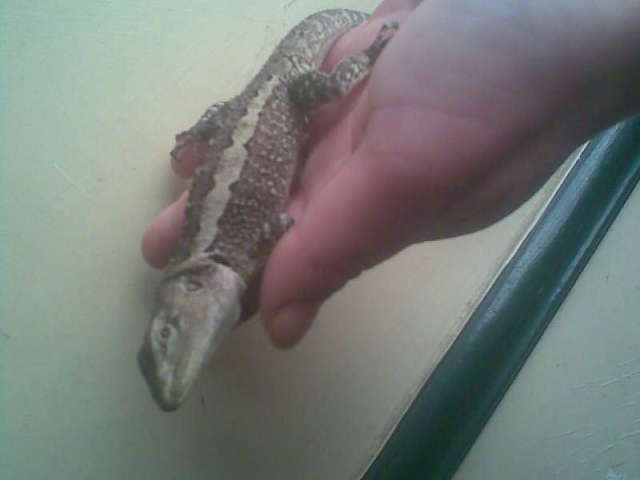 new striped water dragon.?
QuestionQUESTION: i got ur reply about the parasites an
new striped water dragon.?
QuestionQUESTION: i got ur reply about the parasites an
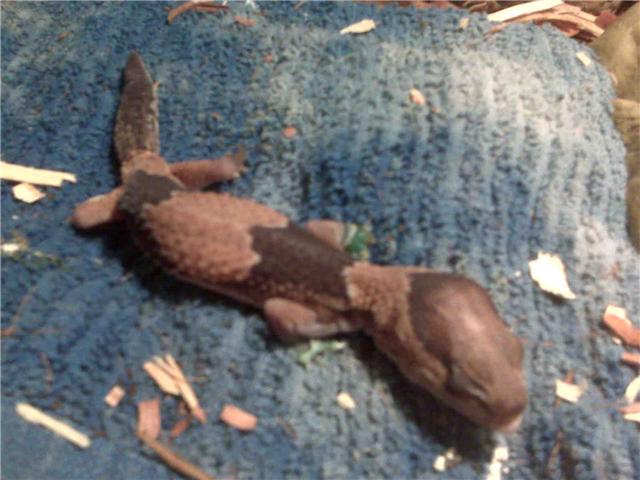 Fat taiked gecko isnt eating
Question
Mr Gecko
Hi my son has a fat tailked gecko who
Fat taiked gecko isnt eating
Question
Mr Gecko
Hi my son has a fat tailked gecko who
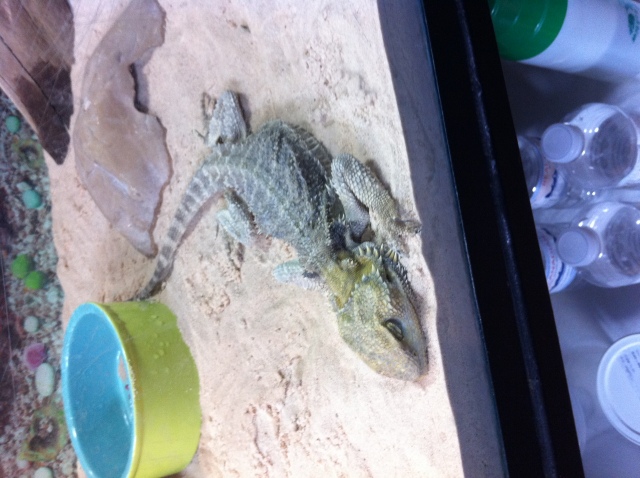 Sick Beardie
QuestionBeardie
QUESTION: Hi Tracie,
im really
Sick Beardie
QuestionBeardie
QUESTION: Hi Tracie,
im really
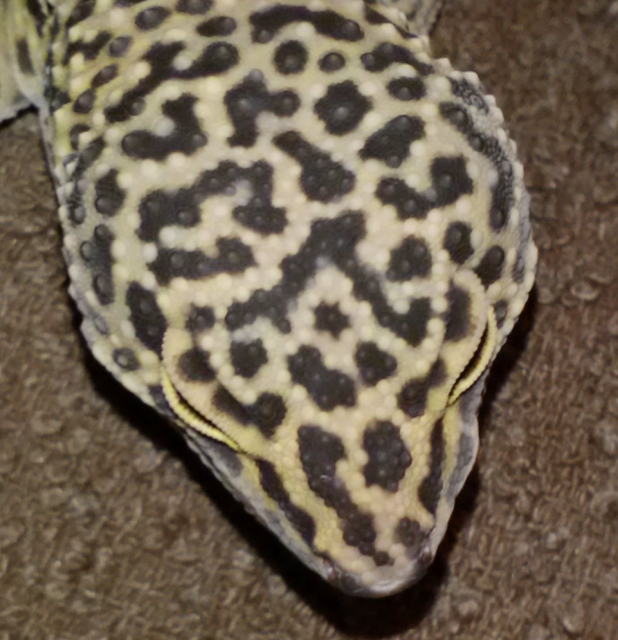 Leopard Gecko abcess
QuestionQUESTION: Ive had my female leopard gecko for 2
Leopard Gecko abcess
QuestionQUESTION: Ive had my female leopard gecko for 2
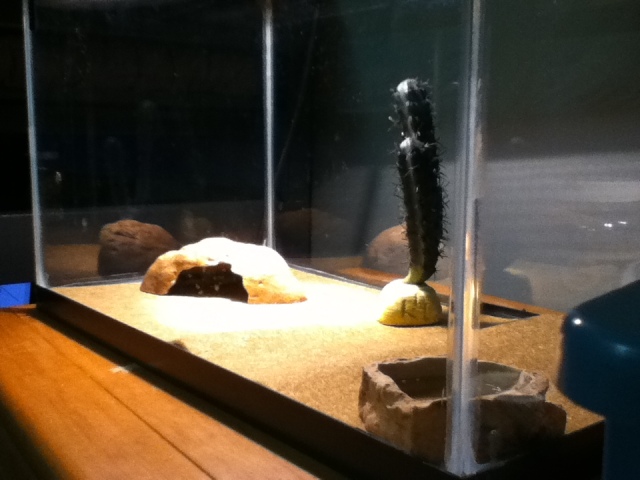 Lizard habitat
Question
Lizard cage
My old leopard gecko died.
Lizard habitat
Question
Lizard cage
My old leopard gecko died.